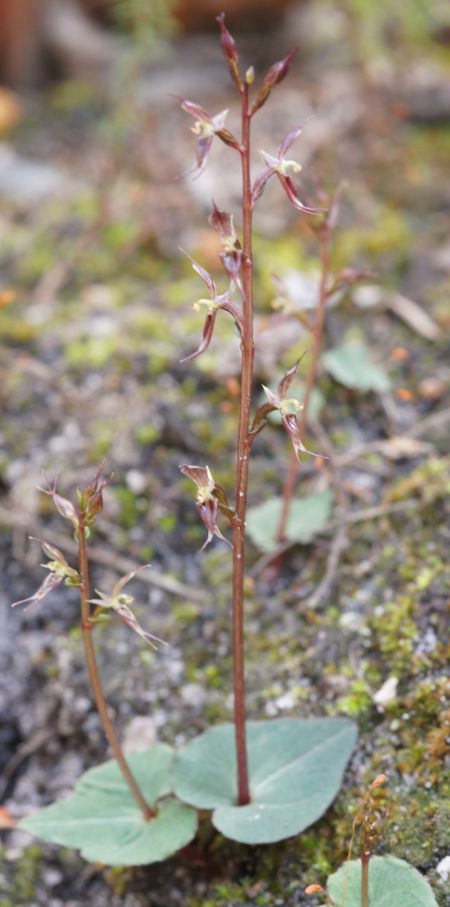The Small Mosquito Orchid Acianthus pusillus seems a little orchid to be giving us a big problem. Anyone, who has spent any time in the forests or woodlands, would be very familiar with this particular species, which is very common in the Anglesea district.
Carpets of heart-shaped leaves, green on top and purplish below, will make you aware of its presence. If you look closely you will notice a slender, greenish-brown, flower stalk, usually no more than 12–15 cm tall, emerging from the base of some of the leaves. This flower stalk will bear about 5–12 tiny, insect-like flowers spread – sometimes crowded – along the stalk.

The problem is that another species of mosquito orchid – the large Mosquito Orchid Acianthus exsertus – is also known to grow in the area. I have been looking, but as yet have not been confident in locating it. A. exsertus is generally more robust than A. pusillus, and the flowers are larger, darker, and more widely spaced along the flower stalk. Orchid texts state that it grows to 30 cm tall – but that is perhaps hard to believe! We need help in locating this species, so please look closely at any colonies of mosquito orchids that you may find, and check if they are the Small Mosquito Orchid, or possibly, its big brother the Large Mosquito Orchid. And of course don’t forget to let us know if you even think you may have had success.
There are some other orchid species to look for. A few Brown Tipped Greenhoods Pterostylis sp. aff parviflora are lingering on, as are the Fringed Hare Orchids Leporella fimbriata. Banded Greenhoods Pterostylis sanguinea are coming into flower, Tall Greenhoods P. melagramma are in good bud, and carpets of Nodding Greenhoods P. nutans are emerging in large numbers.
Every indication is that we should be having a good winter flowering season for our terrestrial orchids.
Margaret MacDonald